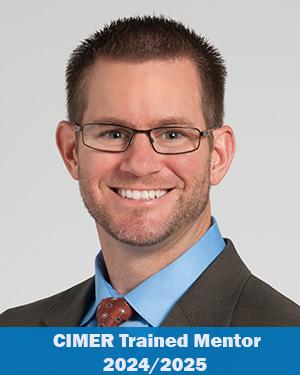Research News
08/16/2022
Photoreceptor Regeneration and Immunosuppression in Inherited Retinal Dystrophy
Zebrafish models offer a link between Notch signaling and the role of inflammation in slowing photoreceptor degeneration.

Zebrafish stand out as a species capable of naturally repairing rod and cone receptors following acute light damage. However, in a recent study led by Brian Perkins, PhD, Department of Ophthalmic Research in the Lerner Research Institute and staff member in the Cole Eye Institute, it was discovered that zebrafish afflicted with inherited retinal diseases do not respond in the same way. The findings were published in the Journal of Neuroscience.
“Over the last 20 years, zebrafish have been an excellent model in helping us understand regeneration because they can regenerate photoreceptors, neurons, tissues, parts of organs, etc. However, people have been promoting zebrafish as a model to understand regeneration in the context of disease, and our disease models weren’t regenerating. We wanted to know why, so that was our starting point,” says Dr. Perkins.
In collaboration with the lab of David Hyde, PhD, at the University of Notre Dame, Dr. Perkins’ team performed single cell RNA sequencing in their mutants and found that the expression of one particular gene, Notch3, was elevated in the mutants compared to their wild or unaffected siblings.
The function of the Notch3 gene is to keep cells from reentering the cell cycle before beginning to proliferate or undergo cell division, which is the first step in regeneration. Therefore, the team’s findings were unusual because the expression of the Notch3 gene typically goes down following acute injury and light damage.
To find a solution, Dr. Perkins’ team had to turn this gene down or off temporarily, for the regeneration process to proceed. Attributing the lack of regeneration to the elevated Notch3, the team used a pharmacological inhibitor to suppress signaling, and the mutants were then able to regenerate normally.
Given the extensive amount of inflammation in the eye, it is easy to assume the regeneration process would automatically be triggered. However, Dr. Perkins and his team discovered it was not. This prompted an investigation into what would happen if microglia was reduced, which is a source of significant inflammation.
“By reducing microglia, it not only triggered a regenerative response, but it rescued the degeneration phenotype. So as it turns out, immune suppression could actually protect the cones, and prevent photoreceptors from degenerating in the first place,” says Dr. Perkins. “It opens future doors because immunosuppression could be used in combination with other treatments as a way of lowering inflammation in patients with retinal dystrophies.”
Dr. Perkins and his team are still trying to understand more about the role of the immune system in retina regeneration, and from where some of the immune cells are coming.
Featured Experts
News Category
Related News
Research areas
Want To Support Ground-Breaking Research at Cleveland Clinic?
Discover how you can help Cleveland Clinic save lives and continue to lead the transformation of healthcare.
Give to Cleveland Clinic